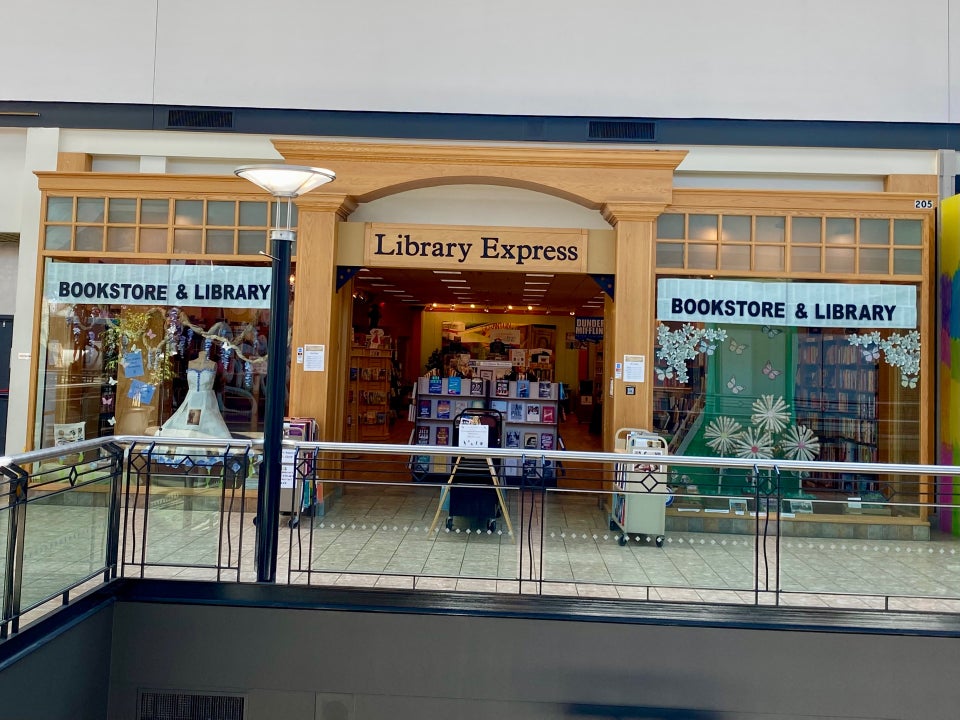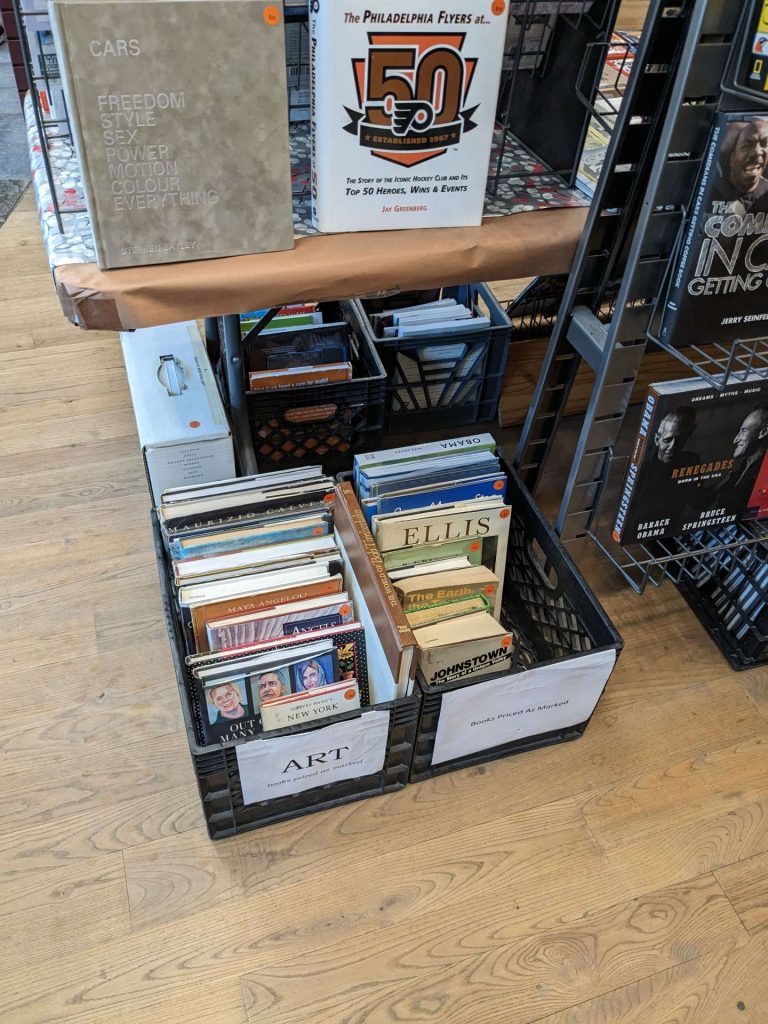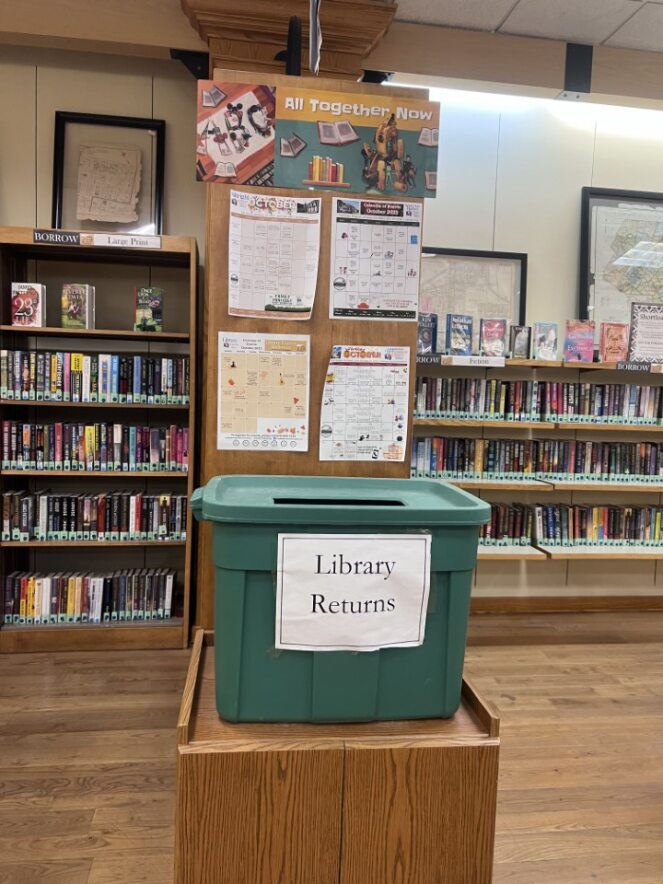Investigating the Inner-Mechanisms of the Library Express
Space and place are separated from one another by the qualifier in activity. According the definition laid out in Tim Cresswell’s “Defining Place” (p. 7), a place is a location that has been given meaning. In other words, it is not so much that it exists, but that it has a deeper human purpose attached to it.
That meaning of any given place is, of course, shaped largely by its contents: this is essentially the thesis for Lydia Pyne’s “Bookshelf”, as well as the whole ObjectLessons series at large.
If we consider the mall the Space – after all, it is a vast empty medium for operating shops – then a store like the Library Express would undoubtedly one of the Places that makes the Space worth noting.

The Library Express is unique among the other stores in the Marketplace@Steamtown for its wood-paneled windowed frontwalls; it quite literally makes the business stand out, characterizing it apart from other run-of-the-mill mall stores rather than fitting in with its surroundings (as Manusos would argue bookstores should). Helping this task would be the eye-catching artistic displays, which must have been made with love and care given their detail. As objects of book mutilation, one can only assume that they don’t directly help sell books like other store displays, but they do communicate to passersby that you’re in the right place if you’re looking for books or culture.

To put it bluntly, the Library Express is a small store. While its art pieces out front might be award-winning, especially for the late-capitalist minimalist decadence that characterizes the mall, you’re not going to catch it on a list of the most beautiful bookstores in the world anytime soon. Many of its shelves look like they were pulled out of a library basement and repurposed. Some books are literally stored in milk-crates under brown-paper-wrapped tables. Black-and-yellow-striped cables run from the heart of the store to the back, alerting you so you don’t step on them and ruin tonight’s movie night.
Checkout at the desk is equally rustic: there’s no fancy card-reader, not even a Square reader that so many small stores now use to utilize cards, but the old-fashioned method where they take your card and run the numbers behind the desk.
This rustic, one-foot-in-the-now and one-foot-fifteen-years-in-the-past environment is no weakness, though: the store is polished enough to be fittingly up-to-date from a Rust Belt perspective, with nothing new that might alienate its working-class audience. It’s not going to enthrall any architects, technocrats, or socialites, but for many workers in greater Appalachia, it’s going to be more welcoming and cozy than many other places they inhabit over the day. It’s generally much more in-touch with the modest working class history of Scranton than any of the other shiny, glassy boutique-esque stores in the mall. Ultimately, it’s a library – there really isn’t any pressure to spend any hard-earned cash, since it quite literally offers free wares, but there’s always the option if you’re looking to spoil yourself with a nice, flashy object of intellectualism.
It’s compact, too – you could reasonably head in, run to the back, and U-turn it out of there in about a minute, even with a leisurely pace. After about ten minutes in-store, you should have visited each little enclave, unless a particular section has particularly captivated you.
If we continue with our assertion that the Library Express is geared toward the working man, then it might not be too odd to call the Library Express model the “mullet” of bookstores: the business (bookselling) is in the front, the party (library and community planning) is in the back.
The Library half hones in on the Express nature inherited from the title. My co-passengers aboard the Express were quick to point out the relatively small selection of borrowed books were. However, a little inside information about libraries is their interconnectedness: the best way to get a good selection from the Library Express would be to order the books there from the website, and pick them up from there, meaning there are many more books within the Library’s catalog than are on the shelves. There are still enough books (and other traditional library media) that one could spend just as much time browsing these shelves as they might any other section of the store, though.

Quick library pitstop! It’s important to note the sheer number of large-print novels stored by the Library section of the Express. Pennsylvania does have an aging geriatric population (PASDC), and this seems like a good-faith attempt to cater to their interests as well as the interests of other visually-impaired peoples. One naturally has to ask how accessible it must be for them to get to the second floor of the mall, through the city and the parking garage, to which the Library Express would answer with their Bookmobile program. It must be intensely refreshing to see so many books for free: with bigger text comes more pages, and thus a higher cost, and such a niche market that many stores won’t think to cater to.
Of course, to get to the Library, you will have to make it through the bookstore, so on the way back you’re likely going to pass up something that at least stops you and catches your interest. While the Express might betray traditional capitalist sensibilities from the outside, on the inside, its front-facing two-thirds are a traditional trip into retail hell. While so many bookstore chains are looking to subvert expectations and/or invert this old model into “business outside, cozy inside” (O’Connor), the Library Express sticks to what works for selling product, as if it’s a business necessity more than an area of interest.
With the promise of free access to intellectualism imbued into the DNA of the store, though, this classic setup somehow doesn’t seem as predatory as it should. While I was checking out, I even chatted with the clerks about the paradoxical business model, remarking that I could get request any of the books at a library free of cost, anyways, and they agreed (of course, I was also patronizing them with a triple-figure sum of “could I really get this anywhere else?” “is this plausibly homemade/small-business?” bibliophilic merch, so they might have been a little inclined to smile and chat with me, but I have naïve hopeful faith in the workers of Scranton like Powederley might have hoped for).

As you enter and leave the store, having taken your quick little journey on the Library Express, whether it be to explore each little U-shaped nook-or-cubby of the store, to check out the frequently sold-out yet incredibly topical new releases, browse the bargain carts, or even to simply drop off library books at the hastily home-made return box, you are reminded of the Library’s programming: bus tickets, movie nights, community-builders, kids’ arts and crafts, and even free computer access at the back if you are truly in need.
Many bookstores claim to be a home away from home but when they’re really looking to gut you at every price point or point-of-sale, are they really that much more cozy-academic than, say, any predatory private university? On the other hand is the Library Express, wholeheartedly here to support its community, whether they be customers or simply card-holding “friends”, the freest ticket to ride one could ask for.
Citations (Theory and Data)
Cresswell, Tim. “Place: a short introduction”. Blackwell, n.d..
McLaughlin, Katherine. “The 9 Most Beautiful Bookstores in the World.” Architectural Digest, 23 June 2023, https://www.architecturaldigest.com/gallery/most-beautiful-bookstores-slideshow. Accessed 1 November 2023.
O’Connor, Maureen. “Barnes & Noble Sets Itself Free.” New York Times, 18 October 2023, https://www.nytimes.com/2023/10/17/style/barnes-noble-redesign.html. Accessed 1 November 2023.
Pennsylvania State Data Center. “POPULATION CHARACTERISTICS AND CHANGE: 2010 TO 2017.” 10 July 2018, https://pasdc.hbg.psu.edu/Data/Research-Briefs/PA-Population-Estimates. Accessed 1 November 2023.
Pyne, Lydia. bookshelf. Bloomsbury, 2016.
Media Credits
Alexander, Amelia, Gavin Knouse, Brooke Nelson, and Janina Reynolds. Various photos of Library Express, 28 Oct 2023.
Knouse, Gavin. “Library Express.” Thinglink, 1 November 2023, https://www.thinglink.com/scene/1776434116347036134. Accessed 1 November 2023.
L, Derek. “Library Express”. Foursquare, 14 June 2022, https://foursquare.com/v/library-express/4e98550ff9f413b04cd4d0f8?openPhotoId=62a8fa26bdc8db3bd5a99005. Accessed 1 November 2023.



0 Comments